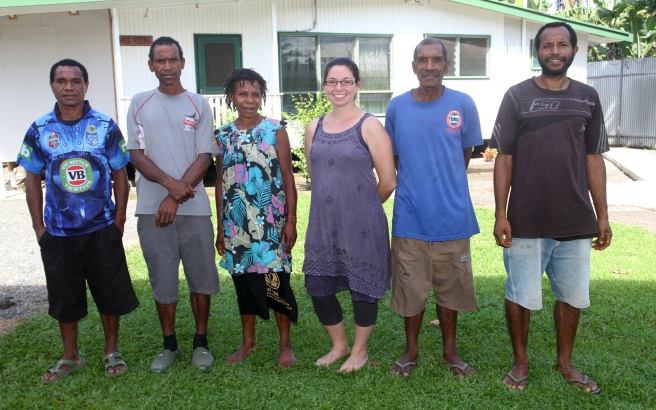 The Yamap language area spans from Salamaua, to Baini in the Bulolo district, to Lae, and Wau. Some people have relocated to Port Moresby, Mount Hagen, Popondetta, and Rabaul. The Yamap team began translating the Bible into their language in 2011. The New Testament is drafted and the gospel of Luke is ready for a consultant check. They have prepared Sunday reading booklets that contain Matthew, Mark, Luke, and John.
The Yamap language area spans from Salamaua, to Baini in the Bulolo district, to Lae, and Wau. Some people have relocated to Port Moresby, Mount Hagen, Popondetta, and Rabaul. The Yamap team began translating the Bible into their language in 2011. The New Testament is drafted and the gospel of Luke is ready for a consultant check. They have prepared Sunday reading booklets that contain Matthew, Mark, Luke, and John.
The translation team has a passion for sharing the Scriptures. They travel to different villages and settlements for up to a month. They call their trips, “Yamap Patrols.” They stay a couple of days or up to a week in each area to teach the people to read the Yamap Scriptures and distribute Sunday reading booklets. During the last trip the team travelled to Lae, Wau-Bulolo, Baini, and Yamap.
 |
| Photo Credit: Janeen Michie |
Isaac, one of the translators, smiled saying, “Something I’ve seen in Baini is their joy to see the Bible being translated in to the Yamap language. Every time we go, they welcome us, they sing and dance, and we walk through a gate that they hang flowers on as though we were government officials. We then sit and they pray. Then take us to the house where we sleep. They do this every time we visit.”
Another translator, Elias stated, “We give people Bible verses to memorize – whole chapters. Many have already memorized Mark chapter one. Now they are memorizing chapter two. We put on the patrol calendar that they need to recite the verses when we come.”
“What I’ve seen on our patrols is that kids sit still and ‘put their ears’ to hear when someone is reading the Yamap language,” said Isaac. “In church, when they hear Tok Pisin spoken and read, they move around and come and go like butterflies – they don’t sit still. When they hear Yamap, they don’t make a noise and they sit still and listen. The kids grow up with the language and they know it.” Isaac continued, “The adults say that, yes, God’s Word came in Tok Pisin and we read it and know what it says, but when we read in Yamap, the ‘hidden talk’ becomes clear and we understand.”
Story quoted in full from: https://thepngexperience.wordpress.com/2019/12/02/hidden-talk-comes-alive/
